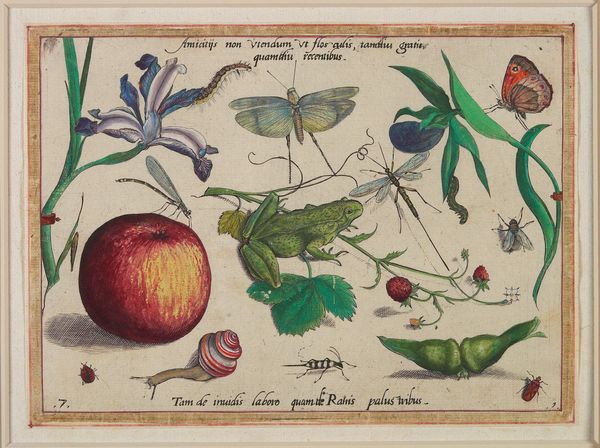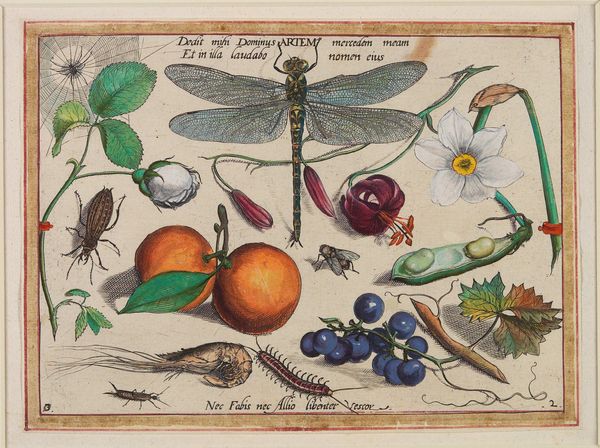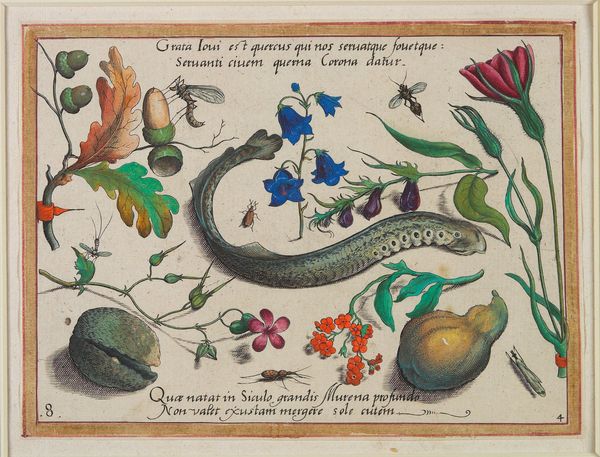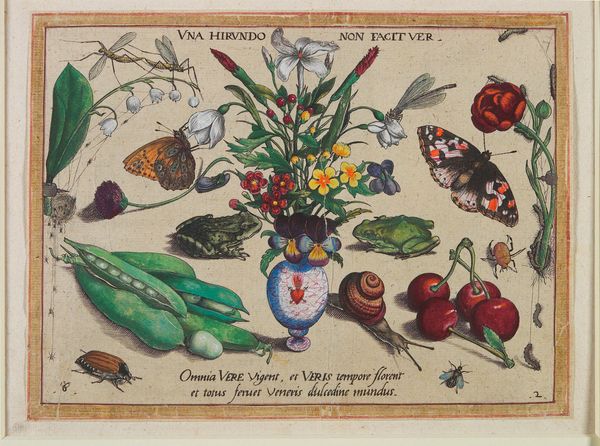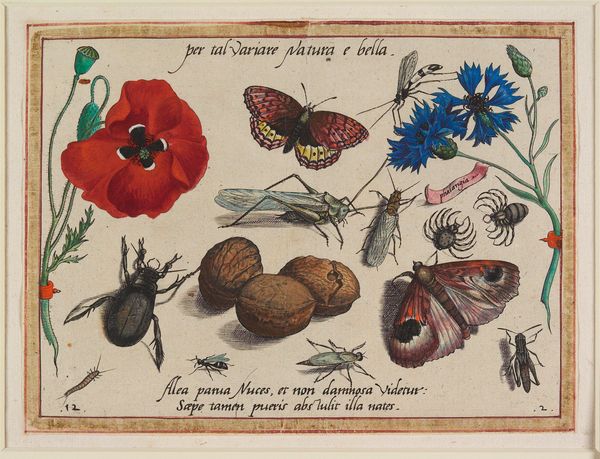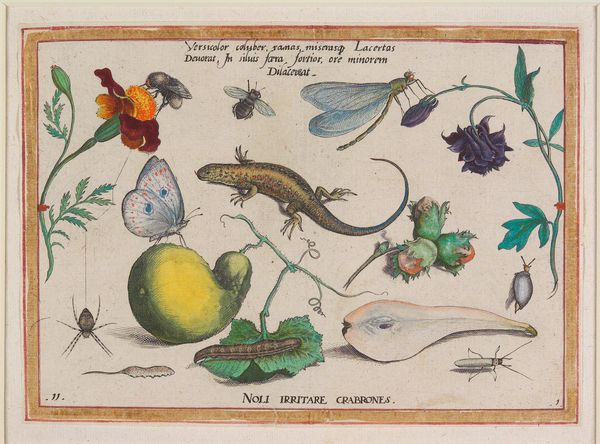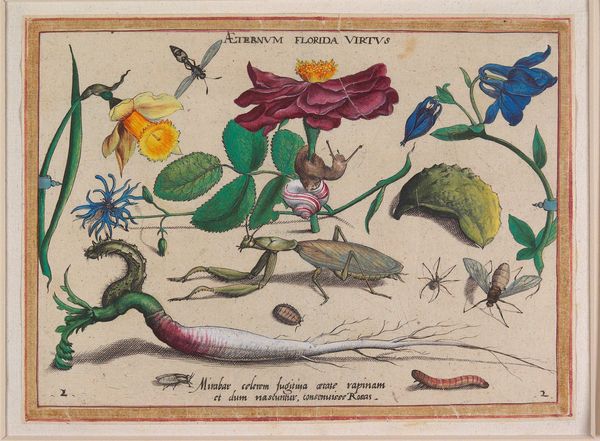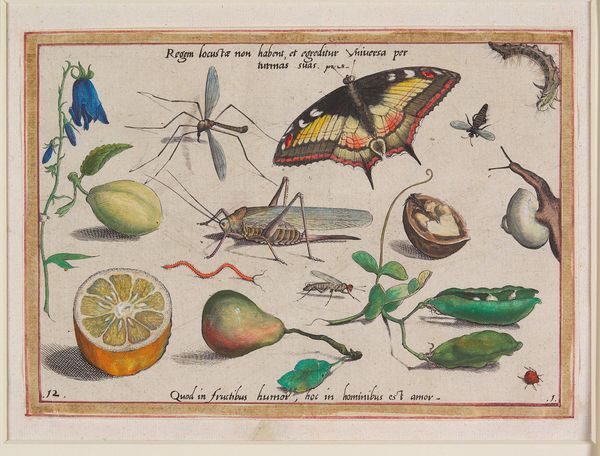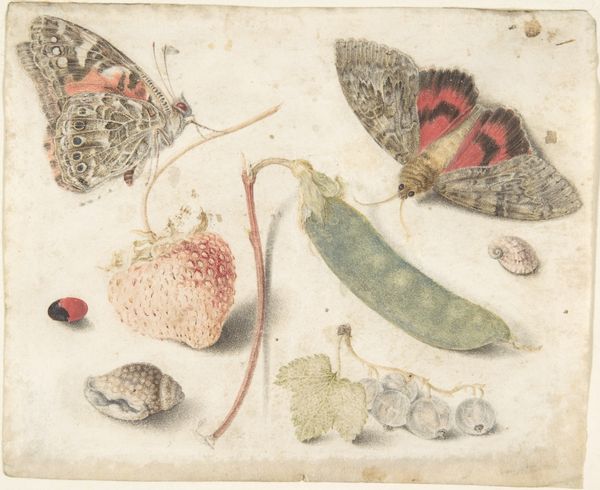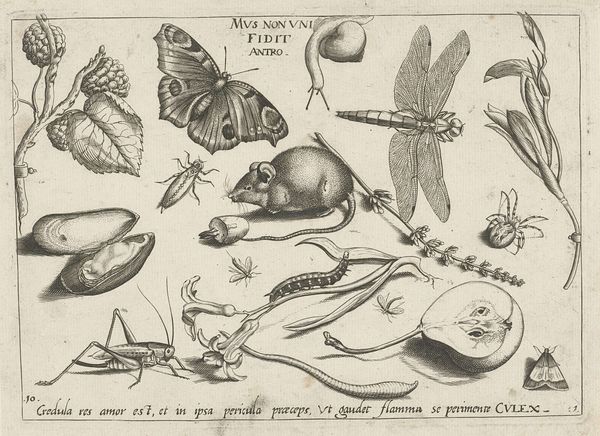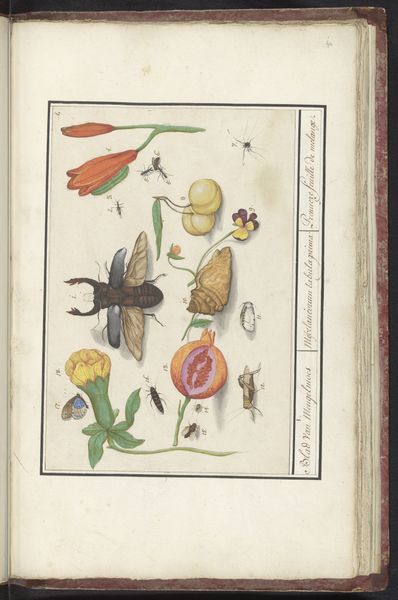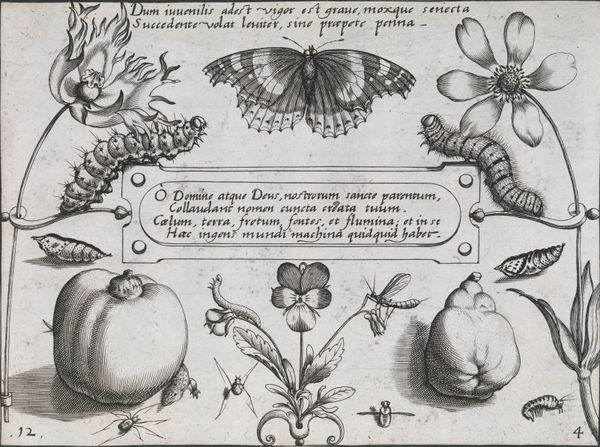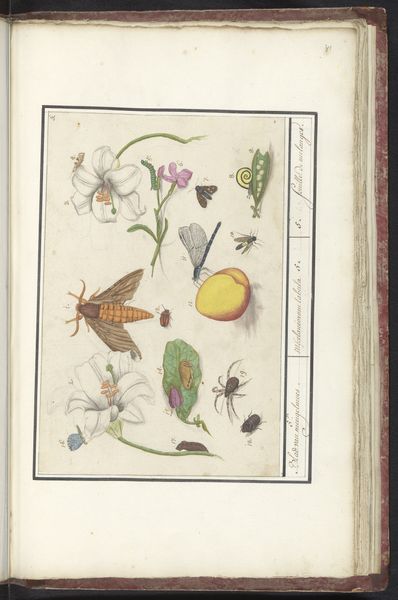
drawing, coloured-pencil, print, etching, paper
#
drawing
#
coloured-pencil
# print
#
etching
#
mannerism
#
paper
#
coloured pencil
#
watercolor
Dimensions: 6 1/4 x 8 3/4 in. (15.88 x 22.23 cm) (plate)
Copyright: Public Domain
Editor: This etching by Jacob Hoefnagel, titled "Virum Improbum vel Mures Mordeant," dating back to 1592, presents a colourful array of flora and fauna. The composition is quite striking, almost like a scientific illustration, but the arrangement feels deliberate. How do you interpret this work, especially with all of its symbolism? Curator: Consider the title: “Let the wicked man be bitten by mice.” Isn’t that intriguing? It’s a morality lesson wrapped in the guise of natural history. Each element—the rose, the snail, even the pesky insects—carries symbolic weight. The rose, for example, typically represents beauty and love, but its thorns also suggest pain and transience. What might the inclusion of both blossoming and decaying flora tell us? Editor: So, it’s not just a pretty picture of plants and animals. There’s a deeper meaning, maybe about the fleeting nature of beauty, or a warning about unseen dangers. The insects and the mouse... are they the “mice” of the title? Curator: Precisely! The mouse, often seen as a destructive force, could symbolize the decay of morality, the gnawing away at goodness. Think of the broader context: 16th-century Europe, a time of religious and social upheaval. Images were powerful tools for conveying ideas, and artists often embedded moral messages within seemingly innocuous scenes. Does that inform how you see the piece now? Editor: Definitely. Knowing the historical context really unlocks the work. It's like a visual fable, reminding us to stay virtuous or risk being consumed by…mice! Curator: And the inscription: "Gather ye roses while new youth and its blossoms last, and be mindful to hasten to pluck them while thou mayst." Do we gather pleasures without wisdom? Does nature contain and mirror the human drama? The image resonates, then, as a poignant reflection on mortality and moral responsibility, wouldn’t you agree? Editor: I do. This wasn't just a display of artistic skill. Hoefnagel was crafting a visual sermon, warning against complacency. I’ll definitely see it differently now. Curator: It’s those layers of meaning that make these works so compelling!
Comments
No comments
Be the first to comment and join the conversation on the ultimate creative platform.
